The movement of data centers is constantly towards higher densities and faster speeds, specifically in hyper-scale companies like Google, Amazon, Apple, Microsoft, and Facebook. Speeds like 25 Gigabits and 100 Gigabits Ethernet have become popular within data centers, and the industry is collaborating on developing coming-generation Ethernets such as 200 Gigabit and 400 Gigabit Ethernet.
MMF (multimode fiber) is a low-priced solution within these conditions due to its high resistance to fiber displacement and relatively insignificant link loss at every connector interface. MMF cabling technics combined with VCSEL and LEDs are best for limited-range optical connections.
multimode fibers channel capacity has multiplied links utilizing parallel transmission above multiple optical fibers (four or sixteen with a pool of 25 Gigabytes per second links in every direction). However, this method increases the cost of the cabling system.
What Issues does Multimode Fiber Carry?
OM2 and OM1 multimode fiber cables, which we originally designed to help Fast Ethernet (1000BASE-SX and 100BASE-FX), no more support 25Gbps and 10Gbps data communication speeds. In Standard ANSI/TIA-568.3-D, OM2 and OM1 multimode fiber kinds are "top," and we don't recommend them for more installations.
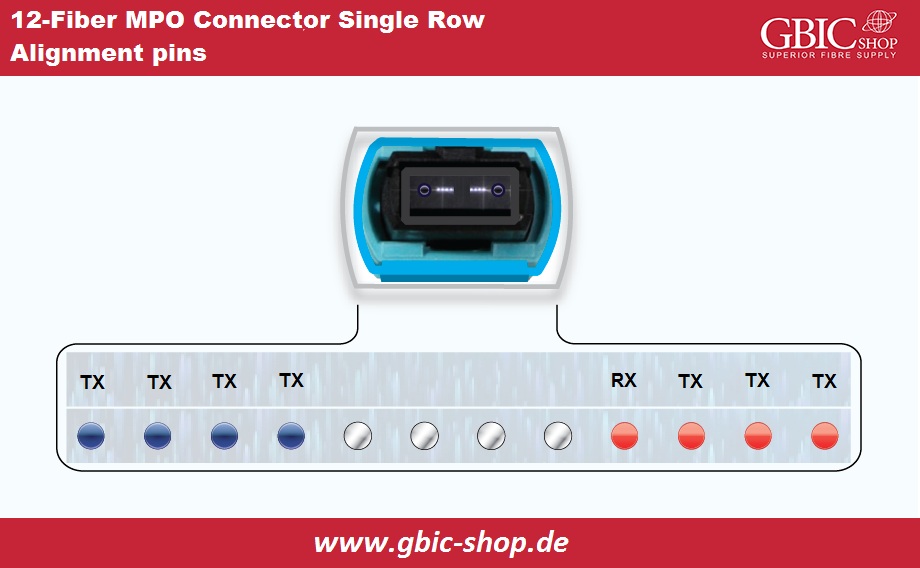
Today, OM4 and OM3 (LOMMF) are the leading multimode fiber optic cables supporting 10 Gigabit, 40 Gigabit, and 100 Gigabit Ethernet, Fiber Channel log, and InfiniBand.
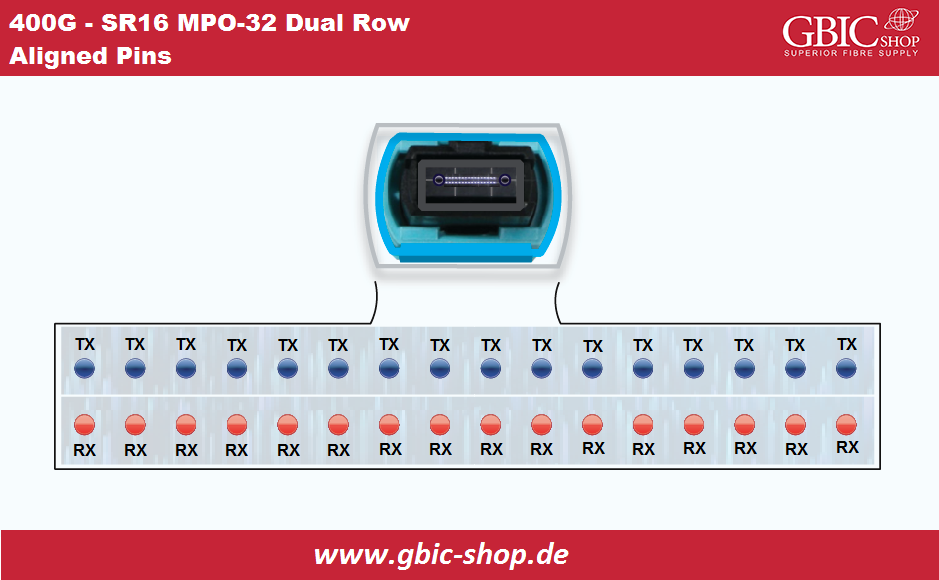
As bandwidth demands increase fast compared with the curve for VCSEL-based optical transceiver technology, fiber optic systems are becoming more expensive to support the transition to next-generation Ethernet speeds. For example, the IEEE 802.3bs draft standard defines 400GBASE-SR4 to reuse the technology 100GBASE-SR4 but requires a new MPO-32 rather than the connector MPO-12. (Right image: 400GBASE-SR16 (Multi-fiber push on 32) interface)
Possible Alternatives: WBMMF (Wideband Multimode Fiber)
We consider WBMMF an ANSI/TIA advancement that can support higher data rates with the required infrastructure to keep excessive bandwidth. Instead of transmitting four signals over optical channels using four separate optical fibers, we can transfer the signals through four different operating windows per fiber. You can use the wavelength to increase the capacity of each fiber minimum of four times, increasing the data rate a minimum of four times (or by reducing the number of fibers we require to get a particular data rate minimum of four times).
We approved ANSI/TIA-492AAAE, a new standard for WBMMF, near June 2016 for 20 months following industry studies that the TIA working group has conducted under TR-42.11 (Subcommittee on Optical Systems) and TR-42.12 (Subcommittee on Optical Systems). The worldwide organization for IEC/ISO has recently introduced the OM5 nomenclature for WBMMF cable. The IEEE 802.3 functional group has considered this new fiber optic standard to develop the coming generation Ethernet standard.
The document TIA-492AAAE defines raw fiber characteristics for wideband operations, while TIA 568.3-D and IEC/ISO OM5 define fiber characteristics for cables containing WBMMF.
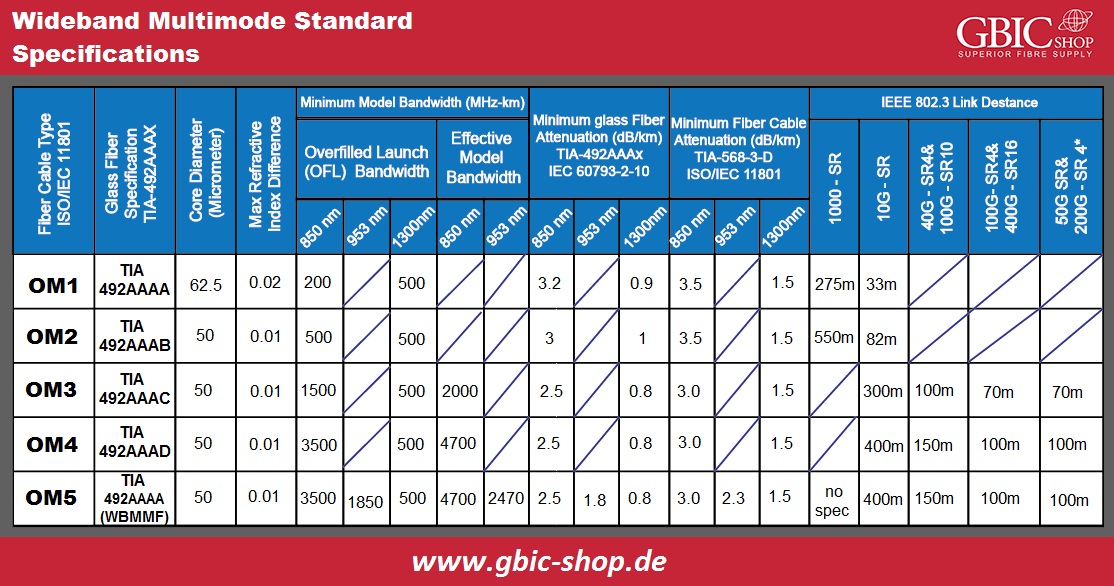
The chart above shows standard multimode fiber specifications and supported link lengths regarding IEEE 802.3 Ethernet implementations.
WBMMF can support:
- WDM (Wavelength division multiplexing) in the 840-953 nanometers wavelength reach
- Backward adaptability with OM4 MMF at 850 nanometers
The modal bandwidth-highest signal transmission rate over a given distance- of multimode wideband fiber is defined to support a 25.78125Gbps bit rate according to IEEE 802.3bm 100GBASE-SR4. However, it has also to help 28.05Gbps as described by the standard 32 Gigabit Fiber Channel, when a minimum of 100 meters reaches the whole wavelength range.
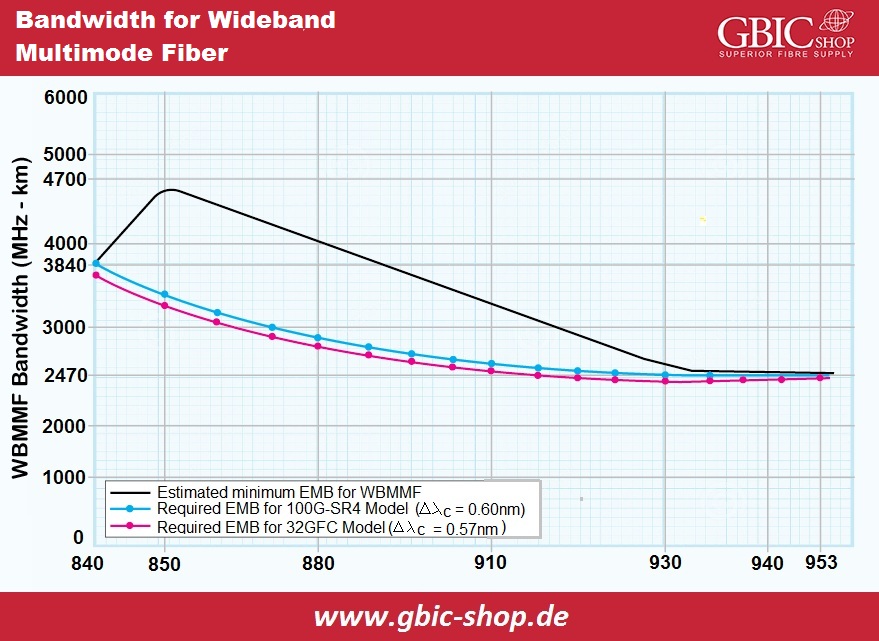
The picture above manifests the minimum EMB requirements according to ANSI/TIA-492AAAE. In multimode fiber optics, we have limited the maximum data rate and range by:
- Fiber attenuation (signal strength reduction) and link loss
- Chromatic fiber dispersion (light pulses’ scattering above time because of different wavelengths propagating at various speeds)
- Fiber’ modal bandwidth
The minimum required EMB level interference at 953 nanometers is comparatively lower than at 840 nanometers. At 850 nanometers, we have specified the minimum EMB for WBMMF as a similar value to discontinued OM4 (4700 megahertz/kilometers) to ensure backward adaptability.
Other factors affecting interconnect failure include:
- VCSEL rise-fall timing and spectral width
- Transmitter releasing power
- Fiber optic modulation amplitude (the distinction between two fiber optic power levels)
- SNR (signal to noise ratio)
- Photo-detector bandwidth and sensitivity
- Adjacent channel interference
We have typically developed these specifications in IEEE 802.3 to provide a technically suitable transceiver with sufficient headroom for mass production.
SWDM (Shortwave Division Multiplexing) Applications:
Parallel MPO fiber optic cables (see Figure 3 below) are significantly more expensive than LC multimode duplex patch cables (as the picture depicts below).
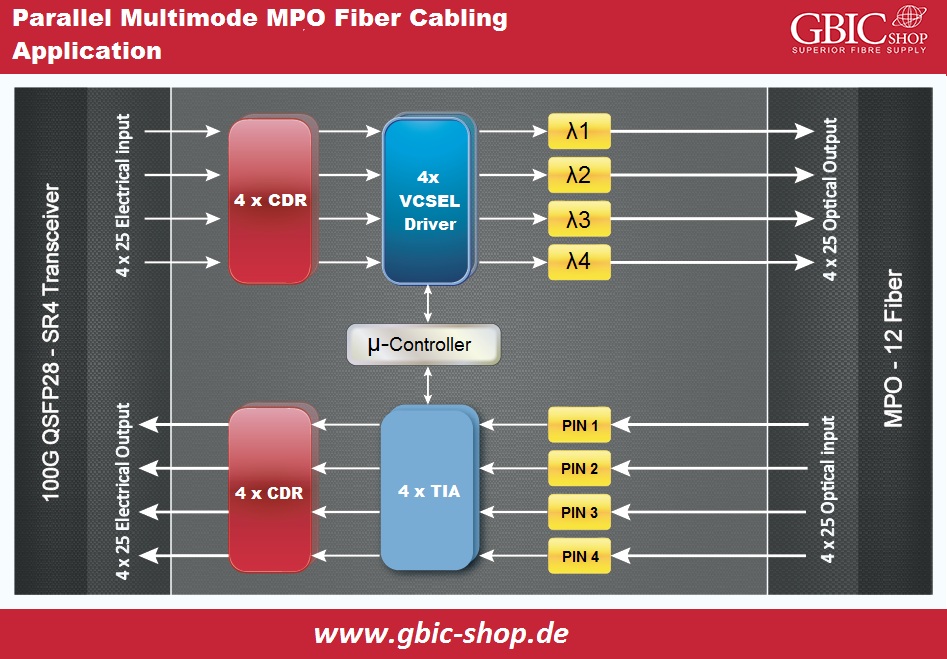
We recommend utilizing a single fiber pair rather than MPO trunks to decrease the cost of real connections.
Using a single optical fiber to transmit different wavelengths (WDM) is not new. We widely use it in telecommunications to decrease the number of single-mode optical fibers. For short-distance data implementations, Cisco BiDi (BiDi fiber optic technology), including Arista Universal optical transceiver solutions utilizing two & four wavelengths, have also proven themselves in the market.
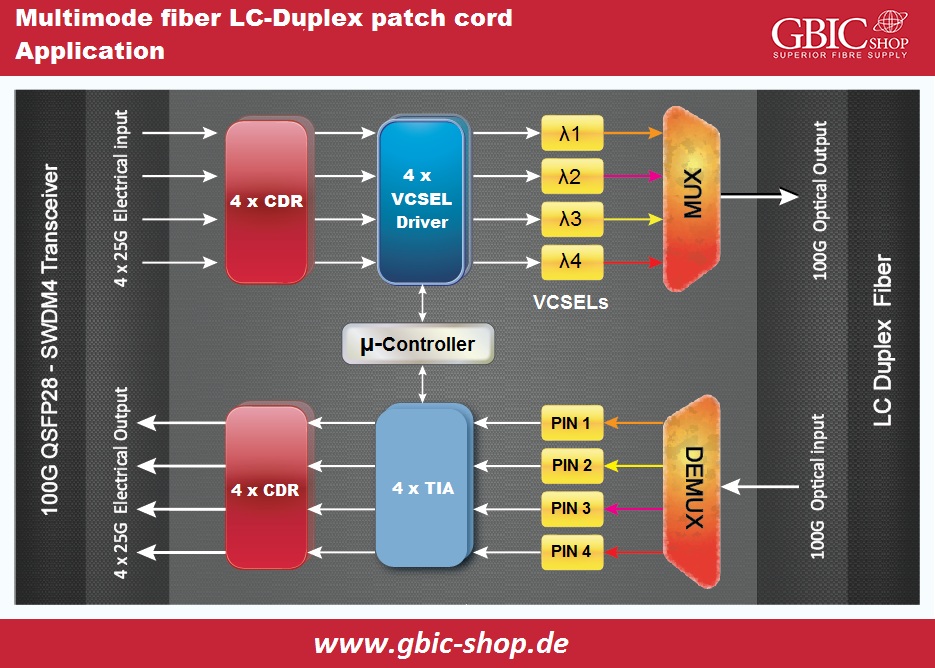
In 2015, a class of fiber, transceiver, and system traders formed the Short-Wavelength-Division-Multiplexing (SWDM) Alliance to produce MSA for SWDM optical transceivers. As OM5 WBMF can use a broad wavelength range from 850 nanometers to 953 nanometers, it is sensible to decrease the number of fibers by transmitting different VCSEL wavelengths within similar multimode fibers.
We have shown the examples of 40 Gigabit and 100 Gigabit QSFP SWDM4. We have defined the possible wavelength grids as 850 nanometers (λ1), 880 nanometers (λ2), 910 nanometers (λ3), and 940 nanometers (λ4) at 30 nanometers.
 English
English
 Deutsch
Deutsch
 Espaniol
Espaniol










